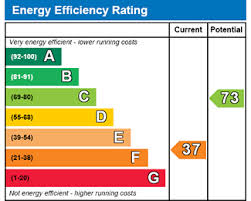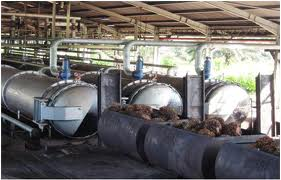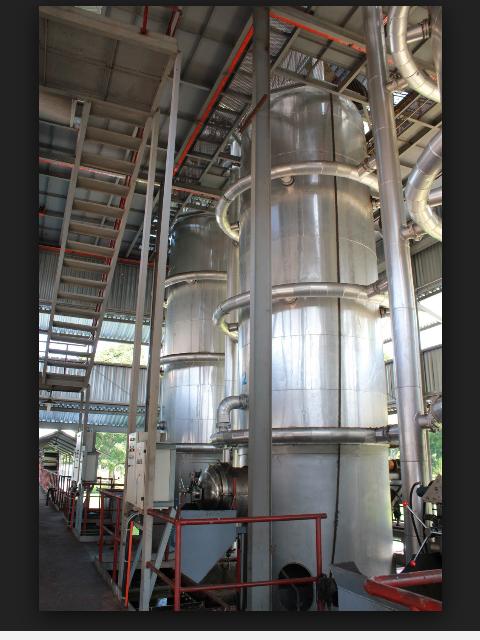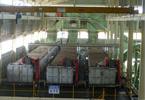Sterilizer Technology Affects the Overall Energy Efficiency of Palm Oil Mills
The type of sterilizer technology utilised in the palm oil mill greatly affects steam and power demand, and performance of the sterilization process. With the growing demand for energy efficiency at palm oil mills, the selection of sterilizer is based mainly on its relevance to steam and power consumption because this will influence the overall energy efficiency of the palm oil extraction process.
The efficient use of energy at a palm oil mill is a major factor that reduces the carbon footprint of palm oil and impact on global warming trends and thus helps prevent climate changes. Utilizing biomass residues generated from the palm oil production process for its energy yield efficiently and productively further determines carbon emissions levels and the sustainability of palm oil production.
In the palm oil extraction process steam consumption for process heating has the greatest effect on energy usage at the mill. The power-to-heat ratio of the palm oil extraction process is low and a simple straight through back pressure steam turbine is utilised to generated electricity to power the mill and supply its exhaust steam for process heating. The process steam consumption thus mainly determines the steam demand on a biomass boiler that supplies high pressure steam to the steam turbine and in turn the amount of biomass residue that need to be burnt in the biomass boiler to supply the steam.
The biomass residue burnt to produce high pressure steam is proportional to the process steam consumption, with electricity generation being a by-product of the steam consumption in a combined heat and power (CHP) plant at the palm oil mill.
The pressure of the exhaust steam from the steam turbine used for process heating has a significant effect on the power output in the combined heat and power (CHP) plant at the palm oil mill. The lowering of process steam pressure could vastly improve power output by the CHP plant and achieve a higher energy-efficiency usage of the biomass. The high efficiency of energy usage contributes to carbon emissions reduction at the mill.
Therefore, it is imperative that process steam consumption and pressure are kept low in the design of a palm oil mill. Various techniques are practised to reduce the steam consumption and heat conservation in the palm oil extraction processes in order to conserve energy for use outside the palm oil mill. Some of the improvement techniques used are heat conservation by insulation of process vessels, process temperature control automation and optimum sequencing of batch sterilizers through automation.
The process steam supplies heat for the sterilization of the fresh fruit bunches (FFB) and maintains temperatures in the various processes for efficient extraction and purification of palm oil, and separation and drying of palm kernels.
Sterilization is one of the key processes in any palm oil mill. Fresh fruit bunches (FFB) are cooked using steam as the heating medium. The sterilization process uses a lot of steam, consuming about thirty (30%) to sixty (60%) percent of the total process steam, depending on the type of sterilizer technology used and the sterilization pattern of single-peak, double-peak or triple-peak cycles utilised. The type of sterilizer technology utilised has a major bearing on the steam consumption and pressure (temperature) of the sterilization process.
The sterilization method utilised also affects process performance and quality of palm oil. The good bleachability of palm oil necessitates a proper air-release prior to sterilization, shortest possible sterilizing time and lowest possible process temperature.
Conventionally, in a palm oil mill the sterilization process is carried out in cylindrical pressure vessels, lying in horizontal or vertical position, and filled with steam under pressure as a batch process. Of late, sterilization process is also being carried out as a continuous process in a heating cabin filled with steam at atmospheric pressure. Process steam consumption for the sterilization process varies between 110 kg to 400 kg per tonne FFB depending on the type of sterilizer technology utilised. The following discussion on the different types of sterilizer is centred on its relevance to steam and power consumption and thus, overall energy efficiency of the palm oil extraction process.
Horizontal Sterilizer
The conventional horizontal sterilizer is the most commonly used sterilizer in palm oil mills operated in single-peak, double-peak or triple-peak cycles as batch process. When disposed in a horizontal position, the cylindrical vessel sterilizer has fairly good disposition because the oil palm fresh fruit bunches placed in cages with a low stacking height are more uniformly spread out in this position across the length of the elongated vessel, as opposed to a vertical sterilizer. Thus, when pressurized steam is injected into the interior of the horizontally positioned cylindrical vessel, the steam can reach out to different directions and corners of the contents within the cages thereby helping treatment of the fruit bunches. Due to the low stacking height of the fruit bunches in the cages, condensate drains out freely from the fruit bunch stack facilitating heat penetration. The low stacking height also limits fruit bunch compression that facilitates low oil loss from the fruits during sterilisation.
However, the older conventional design of the horizontal sterilizer had an inherent shortcoming, that is, one of ineffective air removal. The air in the pockets of space within the stacked fruit bunches in the cages is rendered difficult to be removed during the initial venting stage of the sterilization process. The impediment of air removal had required multiple-peak cycles for air removal through diffusion and incurred considerable steam consumption and sterilization time in the past. The conventional horizontal sterilizer using older methods of air removal consumes between 360 and 400 kg of process steam per tonne FFB and is operated at a steam temperature of 143 °C and 4 bar abs steam pressure in triple-peak cycles to achieve effective heat treatment of the fruit bunches. However, the steam consumption has been drastically reduced when new technologies are adopted for efficient air removal.
Horizontal Sterilizer – (New)
Horizontal sterilizer transitions to superior performance with technological advancement. The superior performance characteristics include operation at lower steam consumption with lower steam pressure and temperature, heating the fruit bunch stack to a uniform temperature, higher throughput capacity and thorough cleaning of fruit surface contaminants.
Recent innovative technologies (patent pending) allow for easy, quick and complete air removal from the conventional horizontal sterilizers. The new technology together with the inherent freely draining condensate enable the horizontal sterilizer to effect the most energy efficient sterilization process in palm oil mills. The new sterilization method uses steam at a pressure as low as 1.5 bar abs with steam consumption as low as 110 to 130 kg per tonne FFB and a sterilization time of about 40 minutes in single-peak cycles to achieve effective sterilization.
Sterilisation at the low temperature comes with the ensuing advantage of low oil loss along with the empty fruit bunches (EFB) and steriliser condensate, improving process performance. The bleachability of the production oil is also improved through a proper air-release prior to sterilization, shortest possible sterilizing time and lowest possible process temperature.
The single-peak cycle sterilisation cuts down labour intensity by way of reducing the time- and labour-consuming valve opening and closing operations. In addition, presently fruit bunch cage handling has also been vastly improved for convenience and safety by cage movement indexing system and cage tippers avoiding capstans, winches and overhead lifting cranes, thereby retaining the horizontal sterilizer as the preferred option with the improvements.
Vertical Sterilizer
Vertical sterilizers are available in several variations where fresh fruit bunches are placed directly into a tall vertical vessel without steel cages. They operate at 4 bar abs steam pressure in triple-peak cycles as batch process. The vertical sterilizer is considered for use in palm oil mills where space saving is important.
However, due to considerable stacking height and resulting fruit bunch compression in the vertical vessel, air removal and condensate drainage from the fruit bunch stack is restricted and this impedes heat penetration. The design requires higher steam pressure with multiple-peak cycles and a longer sterilization time for effective heat treatment of the fruit bunches resulting in higher steam consumption.
The vertical sterilizers use steam at a temperature of 143 °C and 4 bar abs pressure with steam consumption between 305 and 355 kg / tonne FFB and a sterilization time of about 60 minutes in triple-peak cycles.
This method of sterilization involving high temperature and fruit bunch compression incurs high oil absorption into the empty fruit bunches and sterilizer condensate, affecting process efficiency. Thus, commonly where vertical sterilizers are employed, the empty fruit bunches are further processed to recover the oil absorbed in the stalks and fibres to increase the oil yield by shredding and followed by either pressing or solvent extraction – one that consumes considerable extra power. Significantly, the oil recovered from the empty fruit bunch pressed liquor are prone to contaminants like potassium, chlorine and phosphatides that are detrimental to the quality of production oil, and imposes difficulties at the refining stage.
Continuous Sterilizer
The continuous sterilizer carries out the sterilization in a heating cabin subjected with steam at atmospheric pressure as a continuous process. Process steam at a pressure of 4 bar abs is reduced in pressure and admitted into the heating cabin. The fruit bunches are crushed using a mechanical crusher machine before it is transported by scraper conveyor through the heating cabin to expose the material to steam at atmospheric pressure. The crushing of the fruit bunches facilitates steam penetration into inner layers of the fruit bunch.
The continuous sterilizer was introduced as an alternative to pressure vessels and batch process of sterilization and offer advantage in terms of use of unpressurised heating cabin and steady steam demand for the sterilization process. A plus point is that avoiding fluctuations in the steam flow to the sterilization process provides a considerable advantage in maintaining overall process steam pressures and temperatures in the mill. However, this approach is like trying to fit square pegs into round holes. The continuous sterilization process is fundamentally different from the intermittent palm oil process operation in the way material flows. Material flows in a continuous stream in continuous sterilization process, while a typical mill is intermittent in operation.
The typical intermittent operation of a palm oil mill running 16-20 hours a day with daily starting up and shutting down and usual process disruptions in between, depending on the availability of FFB and other factors, diminishes the advantage of the continuous sterilization. Whereas, in a mill using horizontal sterilizers, the fruit bunch cages provide convenient buffer storage for both fresh fruit bunches and sterilized fruit bunches, thereby taking out peaks and troughs in the supply of sterilized fruit bunches to cope with the intermittent operation.
The continuous sterilizer suffers a further significant disadvantage in terms of high steam consumption. Due to its inherent design features, the sterilisation temperature is about 98 °C and the steam consumption is the highest among the different types of sterilizers due to long exposure time. Besides, a stop-start cycle of the continuous sterilization process involves high steam consumption. In addition, the continuous sterilization process includes a second stage of post-heating in order to subject the stripped fruits to a higher temperature to complete its heat treatment – one that consumes extra process steam and power. Moreover, unlike the other types of sterilizers, the continuous sterilization process costs considerable power consumption for the bunch crusher machine and material transport scraper conveyor within the heating cabin. For example, a 60 t/h capacity palm oil mill may require about 200 kW for operating the continuous sterilizers. The high energy consumption may effectively negate the advantage of continuous process that the continuous sterilizer offers with regard to energy usage.
The continuous sterilizer uses steam at atmospheric pressure reduced from process steam pressure of 4 bar abs with steam consumption between 300 and 360 kg / tonne FFB in continuous operation.
The high steam and power consumption may render the continuous sterilizer unsuitable where energy efficiency is important.
This method of sterilisation involving mechanical crushing of the fruit bunches may cause incomplete separation of the fruits from the EFB in the thresher. The contamination of the separated fruits with EFB inevitably causes higher oil loss along with the exuded material from the presses, affecting process performance. Further, the extracted oil may contain harmful substances like potassium, chlorine and phosphatides from the empty fruit bunch contamination that are detrimental to the production oil, if they are not removed fully.
Overall Process Steam Consumption
Sterilizer steam source pressure and steam consumptions in terms of kg per tonne FFB, and its power consumption in a palm oil mill, using different sterilizer technologies can be summarised as follows:
- Horizontal Sterilizer – (New), 1.5 bar : 110 – 130
- Vertical Sterilizer, 4 bar : 305 – 355 & 200 kW power
- Continuous Sterilizer, 4 bar : 300 – 360 & 200 kW power
- Horizontal Sterilizer – (Old), 4 bar : 360 – 400
The remaining palm oil extraction process in the mill typically consumes about 280 kg per tonne FFB of process steam and is not amenable for much reduction. In comparison, the steam consumption of the sterilization process is amenable to reduction depending upon the sterilizer technologies utilised in a mill as discussed above. The upper limit of overall process steam consumptions in terms of kg per tonne FFB, and its power consumption in a 60 t/h capacity palm oil mill, using different sterilizer technologies can be summarised as follows:
- Horizontal Sterilizer – (New) – 410
- Vertical Sterilizer – 635 & 200 kW power
- Continuous Sterilizer – 640 & 200 kW power
- Horizontal Sterilizer – (Old) – 680
As outlined above, the type of sterilizer utilised in a palm oil mill can play a fairly significant role in the energy consumption of the palm oil production process. For example, a palm oil mill utilising the new horizontal sterilizer consumes 35 % less process steam than the vertical sterilizer. Significantly, the lower steam source pressure used in the horizontal sterilizer further increases the useful energy production in the palm oil mill.
In order to ensure great impact in the reduction of energy use in palm oil production efforts should be concentrated on reducing the energy consumption of the sterilization process as it contributes most to the overall consumption. Electricity and heat demand reduction for sterilizer operations are hence key elements of the strategy to increasing energy access by freeing up more renewable energy for use outside the palm oil mill.
The greenhouse gas emitting from palm oil mill operation contributes significantly to the total emissions of the palm oil production. This indicates that the emphasis of low carbon palm oil production management should be laid on efficient management of energy at the mill.
Synopsis
Climate change, the soaring electricity demand, the scarcity of fossil fuels and, consequently, their rising costs, make efficient use of energy gain in importance. By using energy more wisely, palm oil mills need less energy to fulfil their needs and thereby increasing their capacity to export more energy for use elsewhere. In this respect the steriliser technology has a key role in tackling energy efficiency of a palm oil mill.
Besides energy efficiency, sterilisation method also affects process performance. The good bleachability of palm oil necessitates a proper air-release prior to sterilization, shortest possible sterilizing time and lowest possible process temperature.
Please see Sterilizer Technology for Process Performance
Climate change is ‘an immediate and growing threat.’ No stone should be left unturned to mitigate GHG and climate change.





9 replies on “Selection of Sterilizer Technology for Energy Efficient Operation of Palm Oil Mills”
with regards to the following article:
http://rank.com.my/energywise/?p=310
Do you have any links to the following paragraph
“Recent innovative technologies (patent pending) allow for easy, quick and complete air removal from the conventional horizontal sterilizers. The new technology together with the inherent freely draining condensate enable the horizontal sterilizer to effect the most energy efficient sterilization process in palm oil mills. The new sterilization process uses steam at a pressure as low as 1.5 bar abs with steam consumption as low as 120 to 140 kg / tonne FFB and a sterilization time of about 40 minutes in single-peak cycles to achieve effective sterilization.”
what is the patent pending? the manufacturer for the new horizontal sterilizer?
Hello,
I’m currently studying the different existing types of sterilizer to date.
Your article is very interesting. Do you have an idea of the repartition of this different types of sterilizer? Is the horizontal one use in 50, 70 or 90 % of the mill over the world? What about the other (vertical and continuous).
Best Regards
Ludovicy N.
Vertical and Continous Sterilisation systems used in Palm Oil Mills are recent design changes for cooking the oil palm bunches. Particularly as result of automisation of all the operations.
If we notice in new palm oil mills, I would say that more than 70% use these new sytems for economics and simplicity of operations. Automisation is helping in the operations of all the valves and steriliser doors, etc
Horizontal sterilisers /cage indexing system are used for large size mills above 30 tons/hr.
These are my observations. velayuthan Propalm
Any type of sterilisers can be used provided the Mill design such as Boiler and size of sterilisers match the steam flow and pressure from the Steam Turbine.
Vertical Sterilisers had problems but improvement in the steam flow and pressure has resulted in best efficiency for mill throughput of upto 30tons/hr operations.
Higher throughput Mills it may be advisable to use cage indexing with larger size cages and horizontal sterilisers . That appear to be my observation.
Velayuthan
Greetings,
I’d like to know who is the main author of this article because I’d like to invite him/her to the XVIII International Conference on Oil Palm and Expopalm 2015 in Colombia (http://web.fedepalma.org/conferencia-2015)
If do you interest this event, please send me the autor biodata to cadiaz@cenipalma.org.
Thanks.
hi there,
I`m currently studying on the performance of different types of sterilizers and the enhancements that can be done to improve the performance and efficiency of the sterilizer. Is there any parameters that can be used to measure the efficiency of the 3 types of sterilizer. I`m still new for research and for palm oil field. it is much appreciated to have some guidelines for me.
thank you.
The best sterilization for palm oil mill horizatal with Cage movement by indexers .
Dear Sirs,
We are planning extension for our present palm oil mill in Abidjan, Ivory Coast from 20 Ton crude oil per day to 40 Ton/day (20 hrs/day)
Kindly send your recommendation for most efficient power saving sterilizer system that we should use, as we are looking to buy new system
Conventional sterilizers with clutch doors is still common in most palm oil mills. However, with improved technology, most conventional horizontal sterilizers are now being automated to include hydraulic operated doors and cantilever bridges or trolleys. Some palm oil mills are already using the indexing system! While most operate primarily on gantry cranes, hoist and the use of capstan/bollard for cage handling, the indexing system proves to be a convenient choice for mills at 60tph. Effective sterilization depends on good boiler pressure and back pressure steam received. Operational expertise is equally important to get the required oil extraction and throughput.